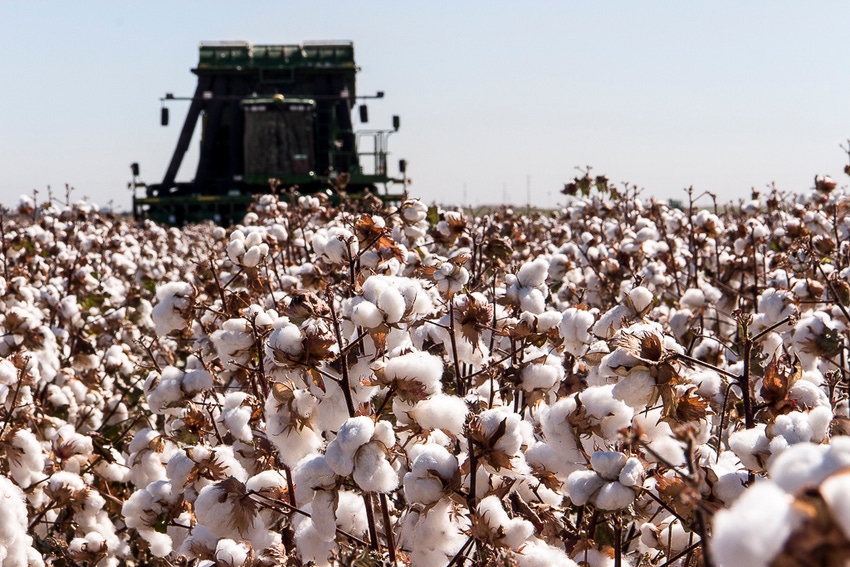
Waiting for your cotton bolls to open before thinking about whitefly control could “stick” you and your industry with a mess you don’t want or need.
“Whitefly management must start early,” says University of California Cooperative Extension IPM Advisor Pete Goodell. “If you have a population once bolls open it’s almost too late.”
Whiteflies can lead to sticky cotton, which last year was linked from overseas spinning mills to the San Joaquin Valley.
Common whiteflies in San Joaquin Valley cotton include the Bandedwing whitefly, Greenhouse whitefly, and Sweet potato (formerly Silverleaf ) whitefly .
Whiteflies leave behind a sugary substance on cotton akin to cotton candy. These sugars are not only sticky, but can attract other contaminants that make the cotton unmarketable as it gums up gins and spinning mills, creating a nightmare for each.
Some grower meetings in California have included video of the chaos created by sticky cotton as a visual lesson to just how bad a little sticky cotton can be. Mixing bales to “dilute” the problem does not work, Goodell says. One or two bad bales can create massive problems for processing.
According to Goodell, along with a sticky byproduct of the feeding process, the Whitefly does direct damage to cotton plants as a phloem feeder and by extracting proteins from plant sap.
Whitefly could be particularly troublesome this year in California, according to Goodell. Even with management methods aimed at shortening the growing season because of the drought, Goodell expects it may not be possible to avoid Whitefly this year.
One possible reason for high whitefly populations this year is fallow fields with bindweed growing in them, Goodell says. Melons coming out of production with bindweed in them can also harbor the pest.
California cotton acreage
Cotton acreage in California is down to about 160,000 acres of mostly Pima varieties this year. That’s the lowest figure since before the Great Depression. Water availability is primarily to blame for the shortage in acres.
Growers opted to plant Pima for the higher price it yields, but as experts warn, the lower acreage numbers could have an even larger impact on marketing opportunities if sticky cotton becomes a problem.
University of California cotton experts are recommending growers harvest earlier than they otherwise would to mitigate issues from cotton pests and to save on precious water resources. An abnormally warm winter allowed growers to plant earlier than usual, which will aid in an earlier harvest of the longer-season Pima crop.
Sampling and control
Goodell says some of the first whitefly treatments in Kern County, Calif. went on in early July.
Larry Godfrey, extension entomologist with the University of California, enumerated Arizona’s whitefly management system this way: one nymph per disk (the size of a quarter) or three adults on a leaf triggers treatment action. California growers can employ this system as well.
Under the Arizona system, growers and PCAs should sample:
30 leaves, fifth leaf from the top
Look for the presence or absence of Whitefly
Look between veins
Use a disc for nymphs
Count only the larger third and fourth instar nymphs
If treatment is warranted, look to products that are safe on beneficial insects. Fortunately, according to the UC experts, there are a number of effective products that are soft on beneficial insects.
For the latest on western agriculture, please check out Western Farm Press Daily and receive the latest news right to your inbox.
According to Godfrey, timing and placement of insecticides can depend on the time of year. Generally speaking, July is the time to use insect growth regulators with August a good month for neonicotinoids. September applications of pyrethroids and carbamate are recommended with organophosphates generally recommended in October.
While there are a host of effective products registered for cotton, including Assail, Carbine, and Lorsban 4E (Advanced), new to the market for 2015 is a product called Sivanto.
About the Author(s)
You May Also Like






